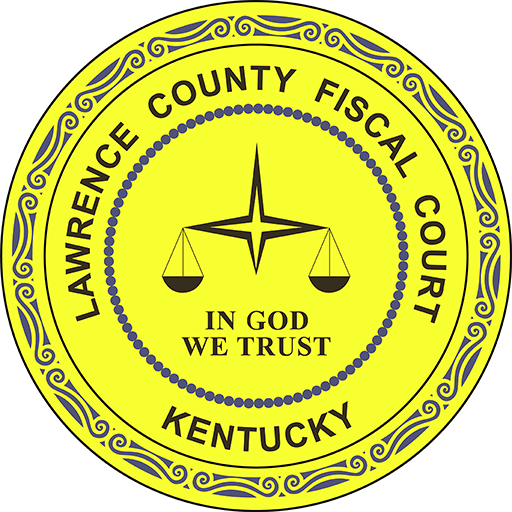A brief history of our county.
Discover the captivating and extensive history of Lawrence County, where you can embark on a journey to explore our intriguing and remarkable past.
1767

George Washington, the first President of the United States, embarked on his journey as a surveyor in 1749. At just 17 years old, he was appointed as the surveyor of Culpeper County, Virginia. During this time, he conducted numerous surveys in the Virginia Territory, exploring vast areas of land, including present-day West Virginia, Ohio, and Kentucky. One of his notable surveys was Lawrence County, completed in 1767.
1789

Lawrence County saw the birth of its first settlement in the spring of 1789 – Vancouver’s Fort. This historic moment unfolded when Charles Vancouver obtained 15,000 acres from Governor Beverly Randolph of Virginia on Sunday, December 14th, 1788. With determination, Vancouver and his men cleared land, constructed the fort, and cultivated crops. However, their efforts were short-lived, as they were eventually forced out by Native Americans in April of 1790.
1821

The General Assembly of the Commonwealth of Kentucky approved the formation of Lawrnece County on Friday, December 14th, 1821. Lawrence County, named in honor of Captain James Lawrence, embodies the valiant spirit of the U.S. Navy captain. Captain Lawrence’s courageous declaration, “Don’t give up the ship!” during the fierce battle between the USS Chesapeake and HMS Shannon off the coast of Boston on Tuesday, June 1st, 1813, has been a source of inspiration for all Americans. Lawrence County was formed from Greenup and Floyd Counties.
1822

Officially established on Monday, February 11th, 1822, Lawrence County emerged as an independent entity with its own governing body, which marked a significant milestone in its rich history. This momentous occasion shaped the course of Lawrence County’s development and set the stage for its continued growth and prosperity and laid the foundation for the vibrant community it is today.
1861

In December 1861, during the Civil War, General James A. Garfield – who would later become the 20th U.S. President – and Union forces occupied Louisa due to its strategic river traffic. Fort Bishop, also known as Fort Gallup and Fort Hill, was completed in Louisa before the war’s end in 1865. Today, this location, is known as Town Hill.
1886

Completed in 1896, the first needle dam in the United States was situated on the Big Sandy River, downstream from the city of Louisa. This river holds great significance within the community, having served as a vital transportation route in the 1800s. The dam played a crucial role in enhancing river travel from its construction until it was deemed unnecessary in 1942.
1906

The first bridge connecting Louisa, Kentucky and Fort Gay, West Virginia, also known as the Louisa-Fort Gay Bridge was more than just a structure. It served as an essential link, spanning the Big Sandy River and connecting communities on both sides. This historic cantilever truss bridge played a crucial role in facilitating local and regional transport. Symbolizing progress and unity, the construction of the bridge commenced in 1905, with a total cost of $39,145. It was proudly opened on Wednesday, June 27th, 1906 at 4 P.M.
1931

On Thursday, March 5th, 1931, the Louisa-Fort Gay Bridge gained national recognition in all major newspapers when it was featured in the renowned Ripley’s Believe It or Not segment. This unique bridge holds the distinction of crossing not just one, but two rivers. It serves as a symbolic connection, linking two states, two towns, two counties, a district, and even a precinct. It’s notable presence has become an iconic representation of the union between different regions and communities.
1946

Fred M. Vinson, a native of Lawrence County, was appointed by President Harry S. Truman to serve as Chief Justice of the United States from 1946 until his death in 1953. Vinson’s tenure as Chief Justice left a lasting impact on the nation’s highest court. During his time on the bench, Vinson played a crucial role in shaping landmark decisions on civil rights, labor laws, and the separation of powers.
1980

The historic 1906 cantilever truss bridge had fallen short of modern structural standards. As a result, a new bridge was constructed using contemporary materials and techniques to guarantee safety and longevity. This crucial transportation link serves residents, businesses, and visitors alike, fostering economic development and regional collaboration. Construction on the new bridge commenced in April 1978, and after an investment of $4,900,000, it opened on Tuesday, August 26th, 1980 at 12 P.M. Once the new bridge stood tall, the 1906 bridge was meticulously demolished.
1987

Louise Lambert of Zelda had a dream. She shared her desire with the county and Roseanne Burchett of the Big Sandy News, who suggested the name Potato Festival. Once the county decided to approve, Louise became festival director and brought her dream to life. The inaugural Lawrence County Potato Festival took place on September 17th – 19th, 1987. Eventually, a more marketable name was needed, so the Septemberfest was born. The first Septemberfest occurred on September 7th – 9th, 1990. Its slogan proudly declares it as the “Best Little Festival in Kentucky”. Except for 2020, due to COVID-19, the festival has continued each year.
1991

Originally scheduled to be constructed in the late 1970s, the Yatesville Lake and Dam and appurtenant works faced an unexpected halt in 1977 due to a presidential order from President Jimmy Carter. However, in a spirited move, President Ronald Reagan reactivated the project in December of 1983, leading to the resumption of the dam’s construction and the appurtenant works. Notably, the lake’s development necessitated the relocation of approximately 212 families, along with the upheaval of 77 cemeteries and 12 miles of roads. Symbolizing a new era, the impoundment of Yatesville Lake officially commenced on Monday, April 15th, 1991 at 7:30 A.M.












